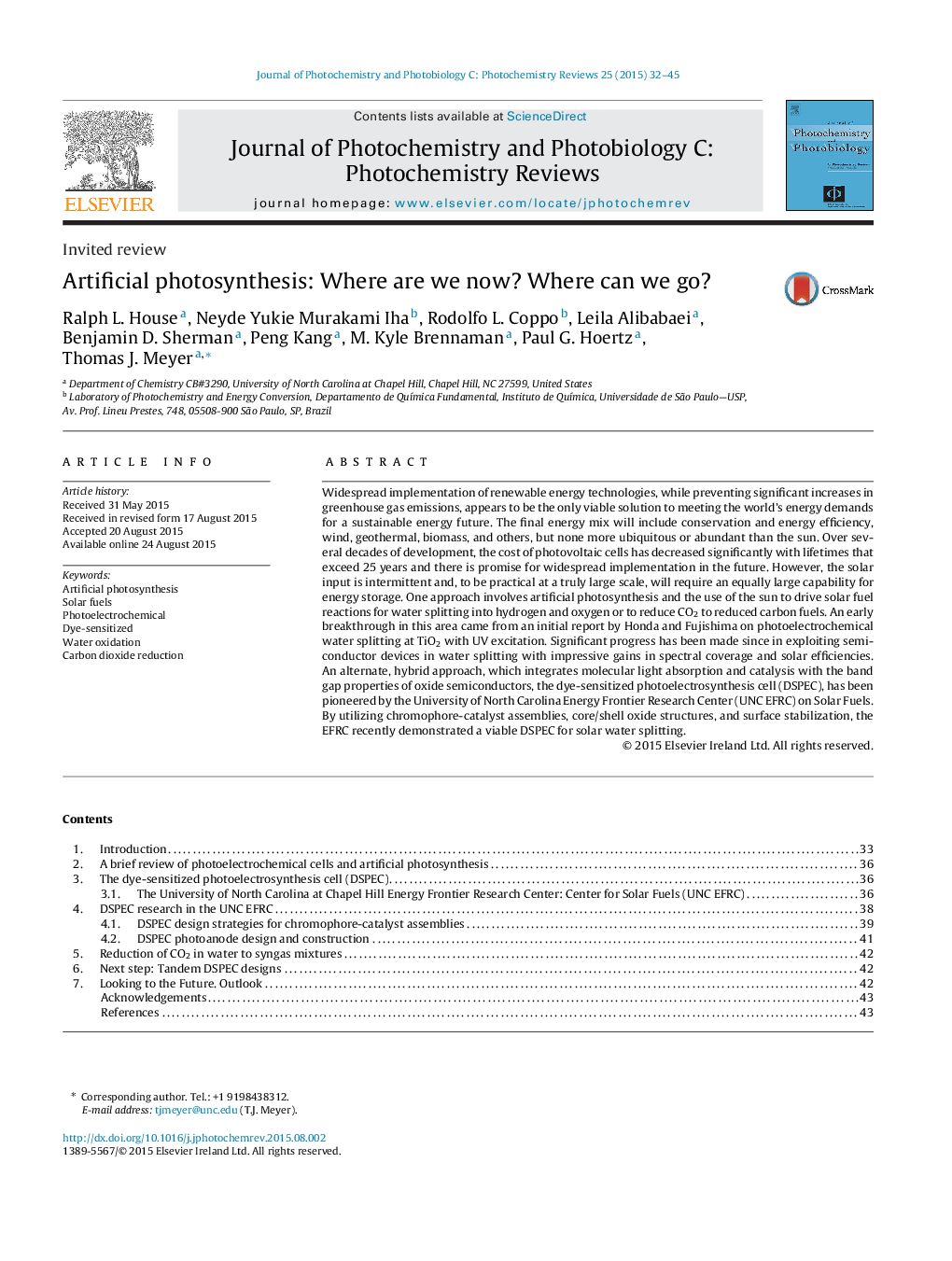| کد مقاله | کد نشریه | سال انتشار | مقاله انگلیسی | نسخه تمام متن |
|---|---|---|---|---|
| 31259 | 44724 | 2015 | 14 صفحه PDF | دانلود رایگان |
• Artificial photosynthesis converts and stores solar energy through solar fuels.
• Dye-sensitized photoelectrosynthesis cells are used for artificial photosynthesis.
• In a DSPEC, molecular assemblies absorb light and carry out chemical catalysis.
• A number of assembly strategies are under investigation.
• Higher efficiencies and stabilities are required for useful devices.
Widespread implementation of renewable energy technologies, while preventing significant increases in greenhouse gas emissions, appears to be the only viable solution to meeting the world's energy demands for a sustainable energy future. The final energy mix will include conservation and energy efficiency, wind, geothermal, biomass, and others, but none more ubiquitous or abundant than the sun. Over several decades of development, the cost of photovoltaic cells has decreased significantly with lifetimes that exceed 25 years and there is promise for widespread implementation in the future. However, the solar input is intermittent and, to be practical at a truly large scale, will require an equally large capability for energy storage. One approach involves artificial photosynthesis and the use of the sun to drive solar fuel reactions for water splitting into hydrogen and oxygen or to reduce CO2 to reduced carbon fuels. An early breakthrough in this area came from an initial report by Honda and Fujishima on photoelectrochemical water splitting at TiO2 with UV excitation. Significant progress has been made since in exploiting semiconductor devices in water splitting with impressive gains in spectral coverage and solar efficiencies. An alternate, hybrid approach, which integrates molecular light absorption and catalysis with the band gap properties of oxide semiconductors, the dye-sensitized photoelectrosynthesis cell (DSPEC), has been pioneered by the University of North Carolina Energy Frontier Research Center (UNC EFRC) on Solar Fuels. By utilizing chromophore-catalyst assemblies, core/shell oxide structures, and surface stabilization, the EFRC recently demonstrated a viable DSPEC for solar water splitting.
Journal: Journal of Photochemistry and Photobiology C: Photochemistry Reviews - Volume 25, December 2015, Pages 32–45
